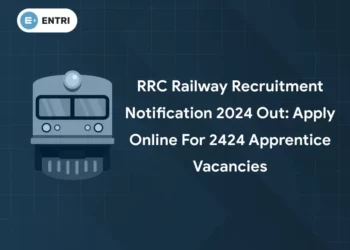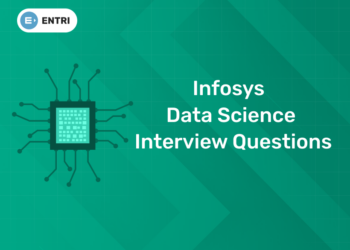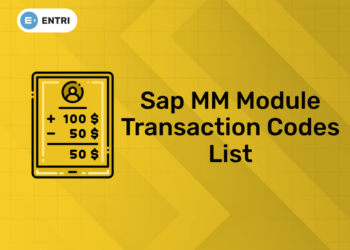Table of Contents
Data science has evolved into such an interesting field, bringing back the desire to become a software engineer or data scientist in college. Now, everyone seems to be using data science as part of their daily job even though we don’t quite know what data science means exactly and how it works to improve our lives. Data and fashion companies and retailers are using data science more than ever before to make the best decisions on marketing and product design. In this article, we’ll go through 10 ways that the fashion industry is using data science to run their business better. The data and fashion industry has been putting data science to good use in recent years, with some of the most innovative ideas leading to great success among consumers, thanks to effective marketing and up-to-date inventory management systems as well as a closer relationship with their audience and clientele.
Here are 10 ways the fashion industry is using data science, which may be interesting for other business sectors as well. But remember that, above all else, data science doesn’t mean data manipulation – it’s about letting your customers speak with their behavior, and connecting the two as effectively as possible. Data science has helped the fashion industry grow in many ways, and it can provide you with the opportunity to learn more about your customers and their needs. Learn about data science in the fashion industry by reading this article about 10 ways that data science works with fashion companies in the modern world. You might be surprised at how much influence this kind of work has on your day-to-day job functions, and it could even provide you with some career opportunities down the road if you’re interested in becoming proficient in statistics or data analytics yourself!
Tracking
There’s only so much you can learn from basic A/B testing or even website analytics. In order to figure out what products or pages visitors are truly engaging with, you need to track individual user sessions and behavior. For instance, seeing that someone visits your landing page twice but then never submits a lead would indicate there’s a flaw in how your site communicates value to that specific visitor. The more granular (and accurate) data you have about each visitor—age, gender, location, device type—the better able you’ll be to understand exactly what they want and deliver it in an engaging way. Big data is here to stay and will impact businesses across all industries; fashion brands aren’t exempt from that reality. Here are ten ways data science is being used in the data and fashion industry today
Data Science courses by Entri. Get a free demo
CRM
Every company, no matter its size or industry, has a customer relationship management (CRM) system of some kind. These enterprise software solutions allow companies to streamline their operations, save time and money and make their customers happy in droves. CRMs are used by businesses everywhere; but which CRM system should you use? We’re taking a look at three of today’s top contenders: Salesforce’s outstanding solution, SugarCRM’s cross-platform flexibility, and Outlook Software Solutions’ lower price point. Choose wisely as your decision will have ramifications for years to come! Salesforce – The largest cloud CRM provider that’s great for managing large enterprise sales processes like lead nurturing and email marketing campaigns. With over 20 million business users worldwide, they offer superior insights into data through tools like Chatter, which helps you collaborate with colleagues and share updates with clients more efficiently than ever before. The downside is that this robust platform can be expensive if not properly implemented. SugarCRM – If your budget doesn’t stretch as far as Salesforce’, then SugarCRM could be a viable option that provides you with advanced sales analytics on one end while offering the ability to handle all of your key data points on the other end without having to invest heavily in any other piece of technology.
Back-end customer service
With front-end customer service, you interact with customers directly through your product. In back-end customer service, however, you’re still in touch with customers but you do so indirectly through an automated platform that allows them to reach out to you through a phone call or an email message. For example, if someone purchases something from your online store, they can choose to contact you through your support channel instead of going into a traditional chat room. Back-end customer service platforms allow businesses to work on their schedules and streamline interactions with customers. Businesses save time and money by doing this because it eliminates the need for employing more staff members to answer phones or manage email messages. Fashion retailers also use data analytics in this way by collecting valuable information about their customers such as what products they prefer, what brands they like, how often they shop at certain stores, how much money they spend at each store, etc. When brands know more about what makes people purchase things, then those brands are able to create better marketing campaigns based on consumer needs and wants.
In addition to improving marketing campaigns and increasing business efficiency, data science also helps fashion retailers make predictions about trends before those trends even happen.
be the master of data science ! get a free demo video now !
Segmentation
First, there’s data segmentation. This means separating your customers into groups of similar people. You can do that based on common characteristics or behavior patterns, which will give you valuable insights into each group and help you figure out which segments are most important to focus on. Then you can use those insights to target your messages more effectively and create more relevant products and services for each specific audience segment. For example, if you’re a fashion brand and want to target teenage girls in Hong Kong with marketing efforts, you’ll want to figure out how they like to communicate, what their shopping habits are like, what motivates them to shop online… all kinds of things! Another way brands are using data science is by analyzing customer feedback. When was the last time you went to a store because you read about it somewhere and had an awesome experience? A lot of companies have figured out that customer feedback is worth its weight in gold, so they spend lots of time listening to what their shoppers have to say (both online and offline) in order to make informed decisions about future product development. Many brands also track social media trends among their target audiences so they know when trends are happening before anyone else does.
Ready to take your data science skills to the next level? Sign up for a free demo today!
Recommendations
What works in one region or market may not work in another. Recommendations can help you fine-tune your messaging to resonate with customers, but only if they’re done correctly. Researchers found that including irrelevant recommendations (related products on a page) or putting too many recommendations on a single page decreased customers’ willingness to buy by as much as 18%. When used appropriately, however, recommenders can be incredibly effective—and increase sales by nearly 20%. They also have been shown to boost customer loyalty. Best of all, it’s one of those use cases where targeting provides true value: Recommendations are an or else offer, meaning you should deliver them only if a user meets certain criteria. The more closely aligned their preferences are with those of the person recommending, the more likely they will be to purchase. And because recommendations are based on historical data and algorithms for sorting preferences into categories, marketers don’t need to rely on intuition alone when making decisions about what might appeal to specific audiences. We look at which types of items do well together and then make recommendations accordingly. For example, we might see that people who like jeans seem also interested in blouses; we would then recommend blouses alongside jeans in our product lineup so we could reach both audiences at once and improve conversion rates for both products.
Trends Analysis
For centuries, fashion has always been built around trends. They come and go, changing our look and feel for the season. In recent years, however, we’ve seen a remarkable shift in that paradigm with online retailing becoming an increasing focus of companies large and small. This new way of doing business has led to significant changes in how data gets collected and shared within fashion companies. Just about every retailer today is using a variety of techniques to gather information about their customers—from basic shopper demographics to personal preferences regarding colors, styles, and fabrics. Beyond that data collection process, however, retailers are starting to look at social networks as another source of information about their customers—especially as a tool for tracking what kinds of products are trending on popular platforms like Pinterest or Instagram. Tools exist that can determine when a particular item starts getting shares or likes on these sites, allowing marketers to not only see which items are resonating with their customers but also when it might be time to make adjustments in terms of inventory.
Are you aspiring for a booming career in IT? If YES, then dive in |
||
Full Stack Developer Course |
Python Programming Course |
Data Science and Machine Learning Course |
Seasonal Forecasting
It’s still a relatively new science, but seasonal forecasting, when combined with weather forecasts and other meteorological data, can lead to surprisingly accurate predictions of what shoppers will buy at any given time. Take spring-summer trends: They often feature florals, bright colors, and lightweight fabrics—key pieces that are already beginning to show up in stores like J.Crew. In retail terms, that means forecasting—predicting demand for certain products in specific months or seasons—can be as valuable as anticipating what we want to buy next week or next year. A successful retailer anticipates the demands of its customers by implementing forecast reports. These reports use macroeconomic data from governments and non-governmental organizations to predict future patterns in employment, wages, prices, taxes, interest rates, currency exchange rates, world events (e.g., political changes), natural disasters (e.g., floods), military conflicts (e.g., terrorism), and technological change (e.g., advances in mobile communications). Forecasting has become so important that an increasing number of businesses are using it to determine their budgets and long-term strategies instead of relying on gut feelings or hunches.
Sales and inventory control
There are several use cases in which retailers can leverage advanced analytics to determine what products to stock, when to stock them and how much of each item to buy. For example, advanced inventory management software can tell retailers how frequently customers purchase specific styles or even similar styles from different manufacturers. This is crucial information for making buying decisions and managing inventory levels: If customers typically buy a particular style before its manufacturer runs out of stock, purchasing more units from that manufacturer ensures that there will be items available on store shelves. With real-time data insight, fashion companies make smarter buying decisions with increased sales potential. Some brands use data science to find hidden gems among existing products. They analyze customer reviews, social media conversations, and other sources of feedback to identify new trends and sellable merchandise that they might not have otherwise discovered. Others choose a more conservative approach, using predictive analytics to see what the future might hold based on past performance. At either end of the spectrum, success depends on turning raw data into actionable insights.
Style visualization
It’s hard to tell whether a dress or shirt will suit you by looking at a small image on your computer screen. You’re better off shopping online, as sites such as Polyvore and Minted give you an accurate idea of how different garments look when worn together. While shopping online, note what combinations are available to see which styles work well with one another. As an extra layer of assurance, use third-party services that apply machine learning algorithms to produce a lookbook consisting of outfits that complement each other. These tools can create an entire wardrobe for you based on what you like.
Ready to take your data science skills to the next level? Sign up for a free demo today!
Cross-selling / up-selling
If you want to get really fancy with your e-commerce retail store, cross-selling and up-selling are great techniques to consider. Cross-selling involves offering other products to customers based on their current product or purchase. For example, if a customer buys a digital camera, your cross-sell would be to offer another accessory that might go along with it such as an extra memory card. Up-selling happens when you offer products of higher value to customers based on their original purchase. So in our camera example, if you decide to up-sell your customer an extended warranty for their new camera, that’s considered up-selling since they purchased a camera already. The problem with this technique is that sometimes people don’t know what they want yet so they may buy one thing thinking it will work out but then later regret their decision. You can download the Entri app from the google play store and enroll in your favorite course.
Related Articles
| Our Other Courses | ||
| MEP Course | Quantity Surveying Course | Montessori Teachers Training Course |
| Performance Marketing Course | Practical Accounting Course | Yoga Teachers Training Course |











